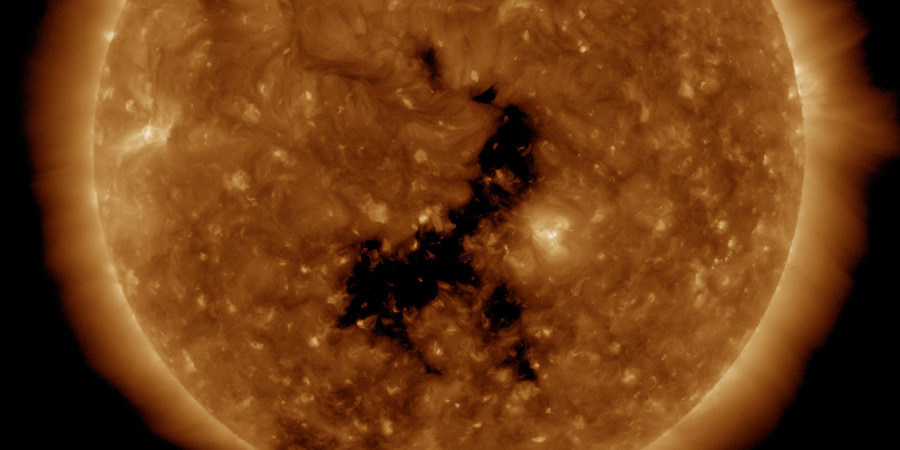Coronal hole faces Earth
Friday, 14 September 2018 15:15 UTC

The previous coronal hole solar wind stream gave us some great auroral displays around the world as it caused moderate G2 geomagnetic storm conditions on 11 September which was predicted perfectly by the NOAA SWPC. Today we have yet another coronal hole facing our planet which should be exciting news for aurora watchers at high latitude locations!
A transequatorial coronal hole is facing Earth. Enhanced solar wind could arrive in ~3 days. Follow live on https://t.co/bsXLidnzGh pic.twitter.com/nw4EKjTmMF
— SpaceWeatherLive (@_SpaceWeather_) September 14, 2018
We are dealing with a transequatorial coronal hole today. This coronal hole changed quite a bit since it last faced our planet. The speed of the solar wind reached well over 600km/s last time around but the interplanetary magnetic field never really cooperated and a maximum of Kp4 (active geomagnetic conditions) were recorded on 20 August.
Similar stats are likely this time around when the high speed solar wind stream from this coronal hole arrives. This could occur in about three days from now which would be on Monday, 17 September. Active geomagnetic conditions (Kp4) are once again likely with a chance for minor G1 geomagnetic storm conditions. Considering we are so close to the equinox, this should also be taken into account as solar storms can be stronger than expected around the equinoxes.
Thank you for reading this article! Did you have any trouble with the technical terms used in this article? Our help section is the place to be where you can find in-depth articles, a FAQ and a list with common abbreviations. Still puzzled? Just post on our forum where we will help you the best we can!
Latest news
Latest forum messages
More topicsSupport SpaceWeatherLive.com!
A lot of people come to SpaceWeatherLive to follow the Sun's activity or if there is aurora to be seen, but with more traffic comes higher server costs. Consider a donation if you enjoy SpaceWeatherLive so we can keep the website online!

Space weather facts
| Last X-flare | 2025/03/28 | X1.1 |
| Last M-flare | 2025/04/01 | M2.4 |
| Last geomagnetic storm | 2025/03/27 | Kp5 (G1) |
| Spotless days | |
|---|---|
| Last spotless day | 2022/06/08 |
| Monthly mean Sunspot Number | |
|---|---|
| February 2025 | 154.6 +17.6 |
| April 2025 | 147 -7.6 |
| Last 30 days | 128.8 -21.8 |


